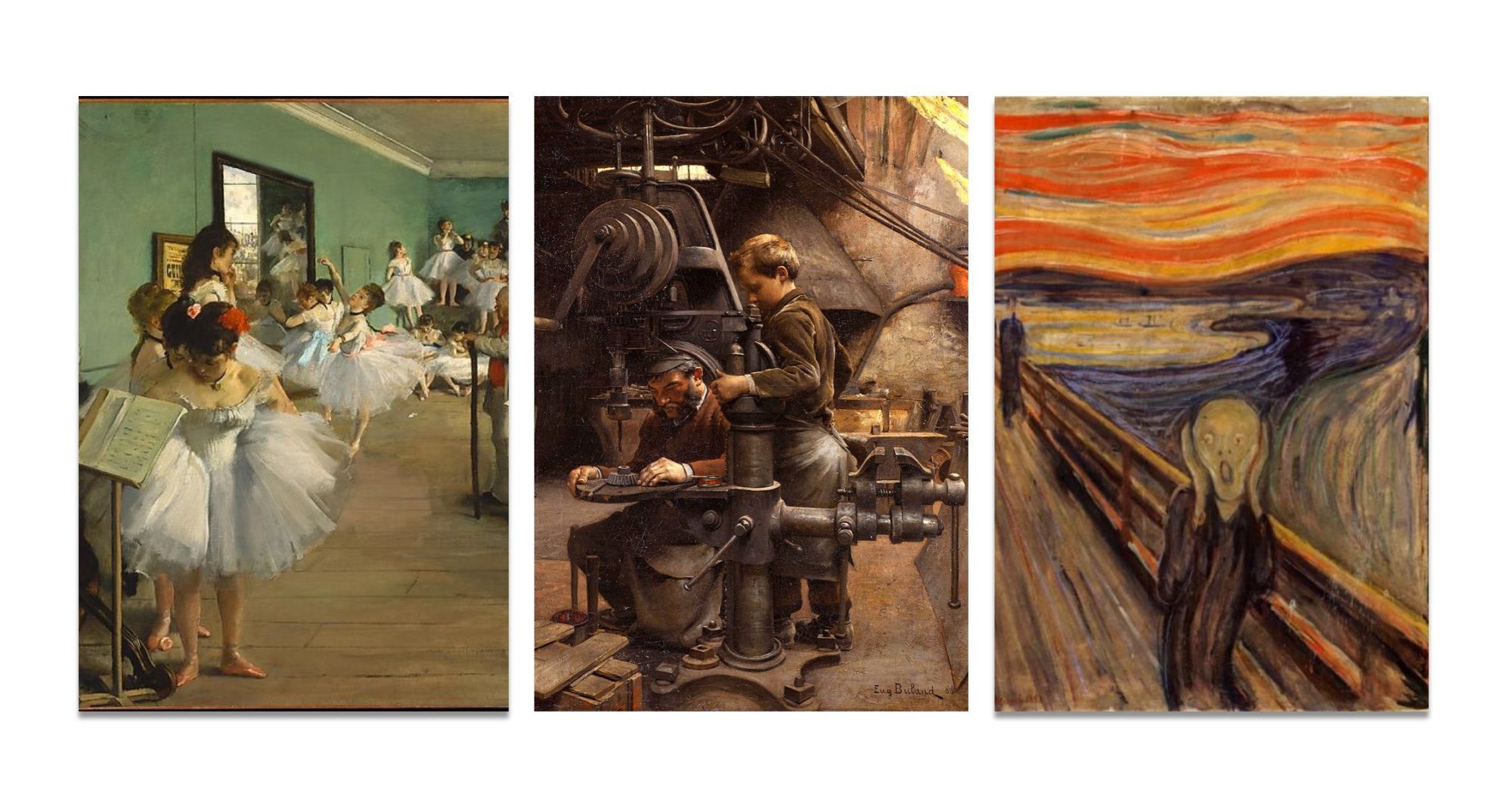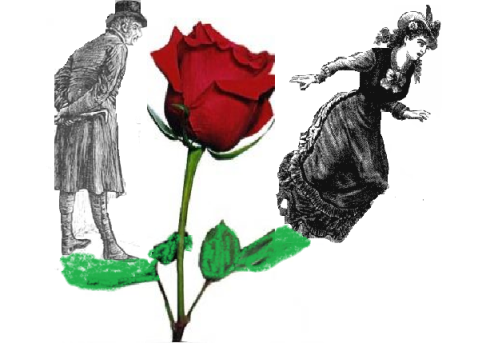Arthur Symons Moulin Rouge provides the reader with a vivid visual of a dance hall in the late nineteenth century. He uses his conventions to support his opinion on prostitution, as well as express gender constructions during the time. Symons starts by setting the scene with Olivier Metra’s Les Roses, a waltz created during the nineteenth century that sheds some light on Symons poem. Les roses, allows us to see the “dancers” movement through the artist’s eyes. Before I delve into the overall theme of Moulin Rouge, I believe that it is important to note that the dancers in this poem are escorts/prostitutes. This is common of the time, and expressive of the barriers that women faced. While Les Roses plays loud in the background, Symons describes the dancing of the women in the hall. He describes this dance as “The perfect rose of lights and sounds” and that the dancer’s movements to the song resemble “The rose returning into the circle of it’s rounds”. This paints a picture of the dancers spinning with their flamboyant dresses, dancing to the waltz, rising with the crescendo and continuing with the melody of Metras’ song. By using the word “rose” to describe the dancers and their movements, Symons allows us to see the dancers as superficial and skin deep. Since roses tend to shed their petals over a short amount of time, so do the dancers by accepting the life of a prostitute. Symons is saying how their beauty is short-lived, and easily reproducible. As Symons moves farther into the poem he delves into the life of the prostitutes and some of the repercussions of this lifestyle. He describes a dancer in the group to be “alone” and “apart” from the others. As Symons continues to say “Her morbid, vague, ambiguous grace” he tells us about the moral repercussions that the dancer in his poem is feeling as the subject of such a grandeur show. He leaves us with the overhanging impression that the dancer is being watched by “mirrors” and that these mirrors are reflecting the dancers own misgivings in her profession. In the next stanza Symons continues to describe the dancers movements as both a “dream” and a “dance of shadows”. By using these obscure lyrics, Symons is explaining that the dance is truly just a charade for prostitution, not a work of art, or a show of skill. Instead he is leaving the impression that this charade dehumanizes the dancer’s by making them the object of the viewers lust. The “mirrors” by now have been identified as the men watching the performance, and most likely the ones that are going to later pay for sex from the dancer that they fancied the most. Now that we see the pressure put upon the women to impress these men, we can see why the dancer feels judged by them. This is tied up by the last stanza where Symons comments that the dancer is “a shadow dancing back to a shadow in the night”. Since during night time shadows cannot form, Symons is commenting on how fake both the prostitute and her customer are. Whereas earlier in the poem where Symons was commenting on the victimization of these dancers, he is now continuing to explain that both the dancer and the men are the protagonist of the situation. Both are “shadows” allowing themselves to be thrown into the throng of prostitution. So, what does this say about gender in the nineteenth century? Tons, while explaining his views on prostitution Symons also explains the sexism that was prevalent during the nineteenth century. During this time women were seen more as objects of a man’s desire, without rights they did not have the resources to truly find themselves as human beings. Instead they are trapped without a means to survive except by selling their beauty to the very men who discriminate against them. They are “shadows” and the men are “mirrors” both focusing on the aesthetics of the situation, and none worried about who the dancer is as a person. This, is the gender problem of the nineteenth century. Sexism allowed the men of the time to see women as objects, not people, and forced the women of the time to give up their humanity in trade for a position on a trophy stand next to their lover. Symons although is convinced that the women also have added to their situation by allowing themselves to be mirrored. Even though they must follow a profession of prostitution they are allowing themselves to be dehumanized. They enjoy the money they make off of prostitution, and have come to accept the lifestyle as their own. By doing this, they continue their oppression for decades.
Artists Statement: In this collage I wanted to take the theme represented in Arthur Symons Moulin Rouge and give it some type of visual interpretation. Here you can see that both the man and the women are standing on the leaves of the rose. The man is smelling the flower, inspecting it for any irregularities and testing to see whether or not it is worthy of being a rose by his standards. The women on the other hand is distressed and falling off the rose/leaning precariously over the edge. To me this symbolized the problem with gender roles in the nineteenth century by highlighting the objectification of women during this period. By showing that the man is judging the rose, and not the women shows that he is only interested in her aesthetics’. What this means for the women, is that she is trapped by the rose and forced to look upon herself in the same way. This captures the oppression that women felt during the nineteenth century. Unable to truly find themselves as people they are trapped in a world of aesthetics.
Synthesize: How does this relate to gender roles and sexuality during the nineteenth century? As I mentioned earlier the problem during this time was sexism. Because men of this time did not respect women as human beings with equal rights, women were repressed into being slaves of desire. Prostitution is a great representative of this, because it shows how both women and men viewed each other during this time period.

